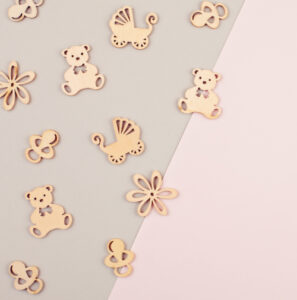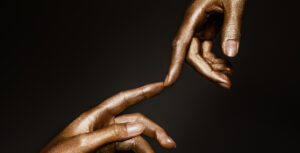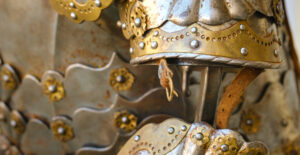
In many South African homes, a new baby isn’t just welcomed with soft blankets and formula tins. They arrive into a world already glittering, earrings no bigger than lentils, bangles tiny enough to slide off a finger, and chains clasped by nervous grandmothers who fumble with hope more than metal. Gold finds its way to the cradle before the baby even knows how to close its fist. And while it might look like a simple tradition, an ornament, a gesture, a gift, the truth is heavier. Because when babies wear gold, they’re not just being adorned. They’re being prepared.
In townships, suburbs, villages, and cities, that thin chain around a newborn’s neck or the glinting studs in soft earlobes aren’t random. They’re currency and caution, memory and map. For many families, especially those living with financial uncertainty, that gold is a fallback plan with a heartbeat. It’s an emergency savings account in miniature. Should anything happen, should school fees rise, or a sudden sickness arrive, or unemployment stretch too long, the child’s gold becomes the family’s quiet insurance. It will sit on the baby, shining silently, until the day it must disappear. Pawned. Melted. Sold. And even in that loss, the gift remains. It helped.
 But there’s more to the story than economics. The gold on a baby is also story, symbol, and stake. For the gogo who insists on gifting a bangle, it’s a legacy looped around a tiny wrist. For the father who might not stay, it’s a mark that says “I was here.” For the mother who had nothing but hope when she gave birth, it’s proof that the child matters. That they’re worth gold. Literally.
But there’s more to the story than economics. The gold on a baby is also story, symbol, and stake. For the gogo who insists on gifting a bangle, it’s a legacy looped around a tiny wrist. For the father who might not stay, it’s a mark that says “I was here.” For the mother who had nothing but hope when she gave birth, it’s proof that the child matters. That they’re worth gold. Literally.
These gifts are sometimes accompanied by whispered dreams. A chain given with the words, “This is for when you turn 21.” Earrings that carry the weight of generations. A pendant passed down not just for style, but because it once belonged to someone who made it through. Gold, in this context, is often the only family heirloom some households possess. It doesn’t sit in vaults. It doesn’t need safes. It lives on bodies, warms with skin, and ages with its owner.
Of course, there are tensions. Some parents worry about the attention a gold-wearing child might attract. Others question whether the tradition still makes sense in a time where burglars know which infants to follow home. There are stories of earrings being snatched in clinics, of babies being targeted in parks. But for every story of fear, there are others of pride. A family that managed to keep a chain safe through three generations. A girl who wore her grandmother’s pendant to her graduation. A boy who paid his college registration fee by pawning the bracelet he wore as a baby.
It’s also impossible to ignore the spiritual undertones. In many cultures, gold is considered protective, a shield against bad luck or evil spirits. The tiny anklet isn’t just decoration, it’s defense. Whether rooted in ancestral belief, religion, or sheer instinct, this faith in gold’s protective properties runs deep. Some say it warms differently on a baby’s skin. That it knows things before we do.
Modern South Africa, with its blend of wealth and want, tradition and tension, continues to find new meanings for old metals. And yet, despite shifting trends, despite rising gold prices and changing values, the gesture remains. When babies wear gold, it’s not about status. It’s not even about style. It’s a language. A way for families to say, we might not have everything, but we will give you something that matters. Something that lasts. Something that shines even when the lights go out.
Because sometimes, the smallest gifts are the biggest bets on the future. And in South Africa, those bets are often wrapped around the wrist of someone who hasn’t even learned their name yet.



